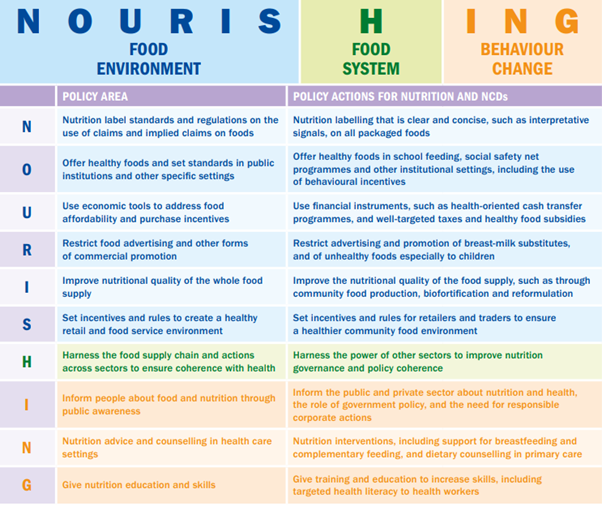

Context
Delays and dilutions have derailed regulations of packaged and fast foods. Is it time to press the panic button?
Background
- The test results of the Environment Monitoring Laboratory at Delhi-based non-profit Centre for Science and Environment (CSE) have unmasked two anomalies:
- First, food manufacturers blatantly sell products that have unhealthy levels of nutrients.
- Second, a nexus between the industry and regulating agencies backs this brazen act.
Analysis
- India urgently needs a robust law on labelling and disclosure of nutritional information on food packs.
- The existing Food Safety Standards (Packaging and Labelling) Regulations, 2011, is too weak and ineffective.
- Even some-thing as basic as salt is not mandatorily disclosed.
- But the statutory framework is just not coming along, clearly due to pressure from the powerful junk food industry and the resultant red tape.
- In 2013, Food Safety and Standards Authority of India (FSSAI), the country’s food regulator, set up an expert committee to regulate junk food available in schools following an order of the Delhi High Court.
- In 2014, the expert committee, comprising doctors, nutritionists, public health experts, civil society and industry, suggested labelling of calories, sugar, fat, saturated fat and salt on the front of food packs as this would help people make an informed choice about the food they eat.
- D Prabhakaran committee suggested resolving ambiguities on the correct serving size of packed and fast foods and the exact nutritional information people need.

Junk food monster: Communicating diseases
- A lab study by the Centre for Science and Environment has found extremely high levels of salt, fat and trans fat in junk foods responsible for obesity and non-communicable diseases like hypertension, diabetes and heart ailments.
- Trans fats are deadly. Their intake must be avoided to prevent heart diseases.
- The new trend of unhealthy food habits among the youth in India has put them at a risk of developing obesity, diabetes, heart attack -basically non-communicable diseases (NCDs) accentuated by unhealthy lifestyles.
- NCDs are those diseases that are not caused by an infection and not spread through contact with another person. They are the silent killers of our generation. Nearly two out of three deaths in India are due to NCDs, with heart diseases and chronic obstructive pulmonary disease (COPD) becoming the leading causes of death in the country.
How is Behavioural change possible?
- This behaviour can be changed through socio-ecological approach, which involves influencing both personal and environmental factors of an individual to bring behaviour change.
- Sensitisation programmes to popularise healthy eating among the youth should aim at improving the environment where they spend most of their time.
- Displaying educational posters about healthy eating in the canteen and replacing unhealthy food items offered there with nutritious ones, along with access to clean water, will help instil healthy eating habits among students.
- Group educational sessions about healthy eating help target a larger cohort in the community rather than one-on-one counselling
- Social and digital interventions via internet-based coaching and self-management programmes and introducing mass media campaigns can also encourage youngsters to choose healthy foods.
- The best way to tackle this growing epidemic of NCDs is to focus on creating an environment that supports positive knowledge, attitude and behaviour change around healthy eating habits.
Regulation is crucial
- Along with these programmes targeted at individuals, there needs to be a strong regulation on food labelling that will push the private players in the domestic food industry to show their social responsibility towards the youth of the country.
- Laws and policies to ensure that meals in school follow nutritional guidelines, offering healthy snacks at work meetings and regulating the marketing of unhealthy foods and beverages, could go a long way in supporting and sustaining healthy behaviours.
- The government of India has taken cognizance of this situation and the Safe and Nutritious Food campaign by the Food Safety and Standards Authority of India (FSSAI) that is helping people adopt the habit of eating safe and eating right.
Why NCDs need to be considered when addressing major nutritional challenges
- Foods, diets and nutritional status are important determinants of non-communicable diseases: What we eat and our nutritional status can affect cardiovascular diseases, some types of cancer and diabetes. Foods, diet and nutritional status, including overweight and obesity, are also associated with elevated blood pressure and blood cholesterol, and resistance to the action of insulin.
- NCDs affect people in every corner of the world: Of 52.8 million deaths worldwide, 34.5 million were due to NCDs, including cardiovascular diseases (coronary heart disease, cerebrovascular diseases such as strokes, and peripheral vascular diseases), diabetes, cancers and chronic respiratory diseases.
- Populations around the world are increasingly exposed to foods and diets that influence the risk of developing NCDs: Globally, calories obtained from meat, sugars and oils and fats have been increasing during recent decades, and those from fibre-rich foods such as whole grains, pulses and roots have been declining. Consumption of processed and convenience foods continue to rise rapidly.
- Under nutrition places people at risk of developing NCDs: Under nutrition, and its effects on growth, development and maturation, has numerous detrimental outcomes, including the potential to increase risk of developing an NCD later in life.
- Food systems present challenges to the prevention and control of NCDs as well as under nutrition: Food systems have undergone dramatic changes in past decades. Global food system changes have also had dramatic implications for NCDs by influencing the nutritional quality of foods that are available, affordable and acceptable to consumers.
- A more concerted response is needed for policy actions, governance and monitoring and evaluation: The World Health Organization (WHO) has led the way in developing this global response to NCDs. They have put into place a global architecture for addressing NCDs, including recommendations on population-based actions and monitoring frameworks with targets and indicators. Greater coordination is needed between this process and actions being taken to address under nutrition and challenges in the food system at the global, regional and national levels.
Recommendations for priority actions
- Key actions for national governments: Develop and implement a comprehensive range of well-targeted policy actions to provide an environment conducive to nutritious, healthy diets. This should include the options set out in WHO and UN documents and take a coordinated approach to under nutrition, obesity and NCDs.
- Key actions for international health, food and development agencies: The institutional architecture for NCDs and nutrition should be strengthened to ensure different UN agencies and programmes work more effectively together, engage in constructive dialogue, and agree on common objectives.
- Key actions for researchers: Researchers should engage proactively with the monitoring and evaluation of policy actions in order to build the evidence base, and communicate the full range of available evidence clearly and consistently to policymakers.
- Key actions for donors and research funders: Support capacity building for effective policy development in governments, the development of a trained workforce of public health nutrition professionals, and advocacy in civil society organisations.
- Key actions for civil society: Civil society should act as advocates and watchdogs, by monitoring and assessing policy actions being taken by government agencies and commercial operators and their impact on nutrition and NCDs.

Conclusion
Reports present alarming figures for the prevalence of obesity and non-communicable diseases. Overweight and obesity are potent risk factors for cardiovascular diseases and type 2 diabetes and are major contributors to premature death.
The escalating level of overweight and obesity among children and adolescents is of particular concern, given the recent evidence linking childhood and adolescent obesity to increased risk of obesity and morbidity in adulthood.


